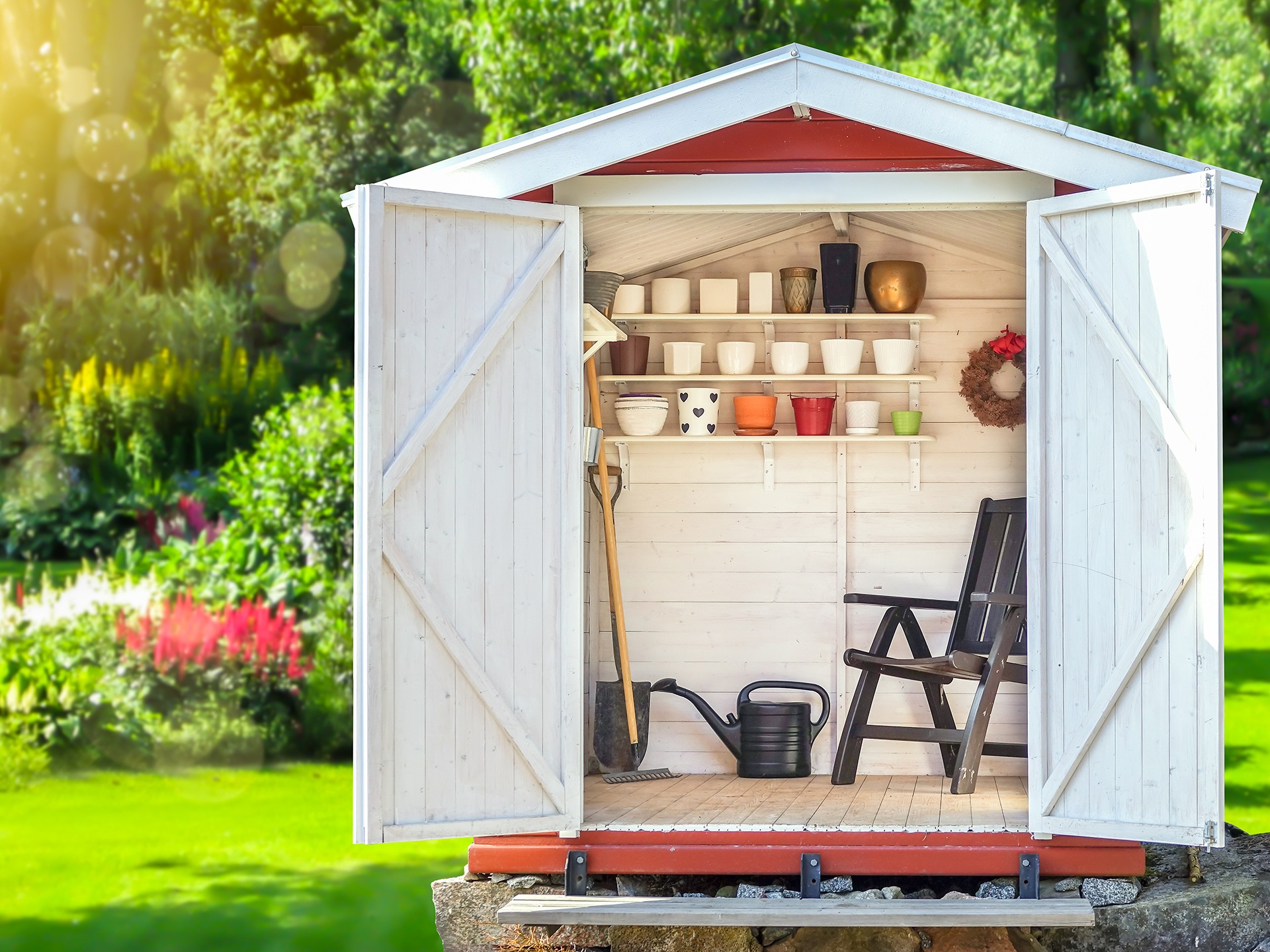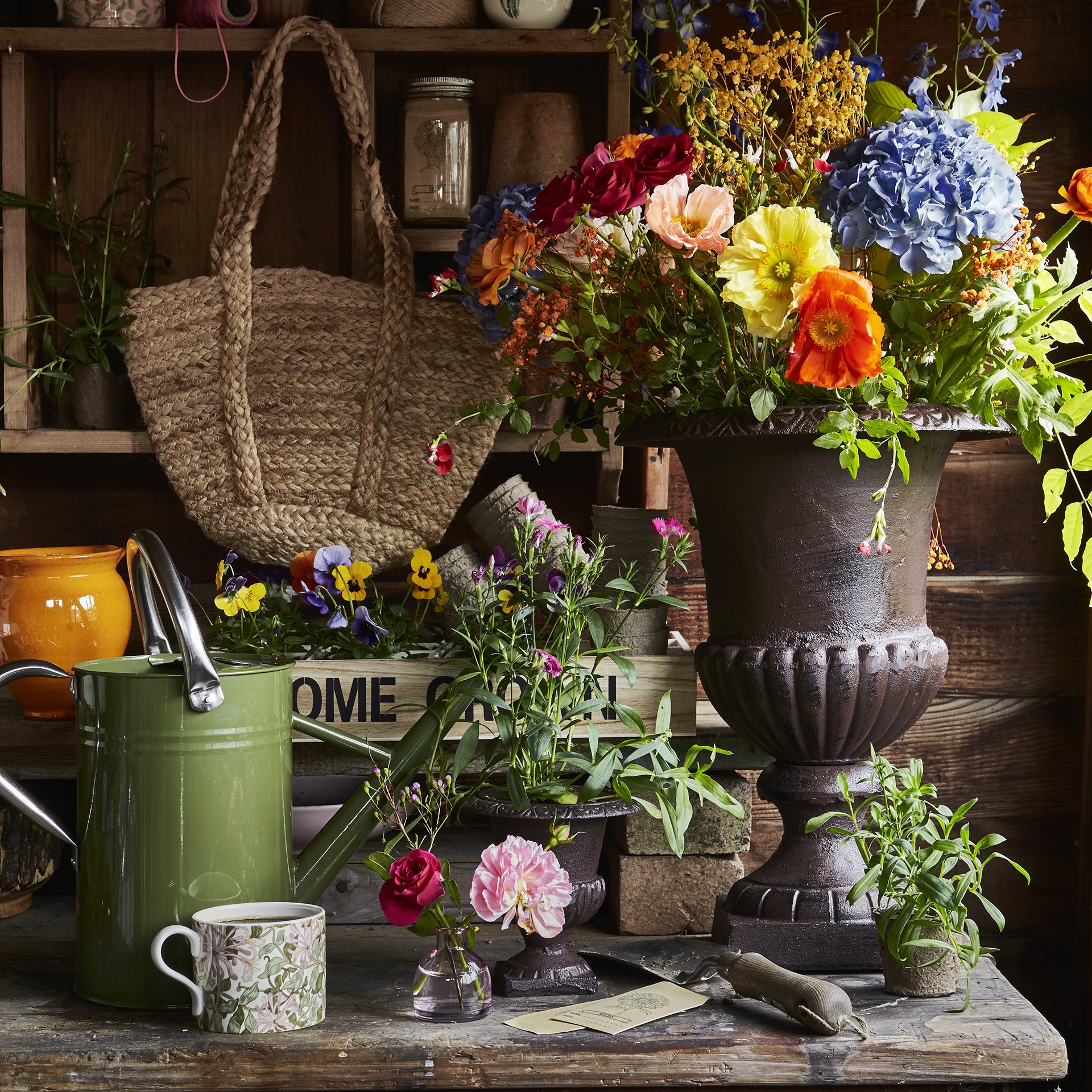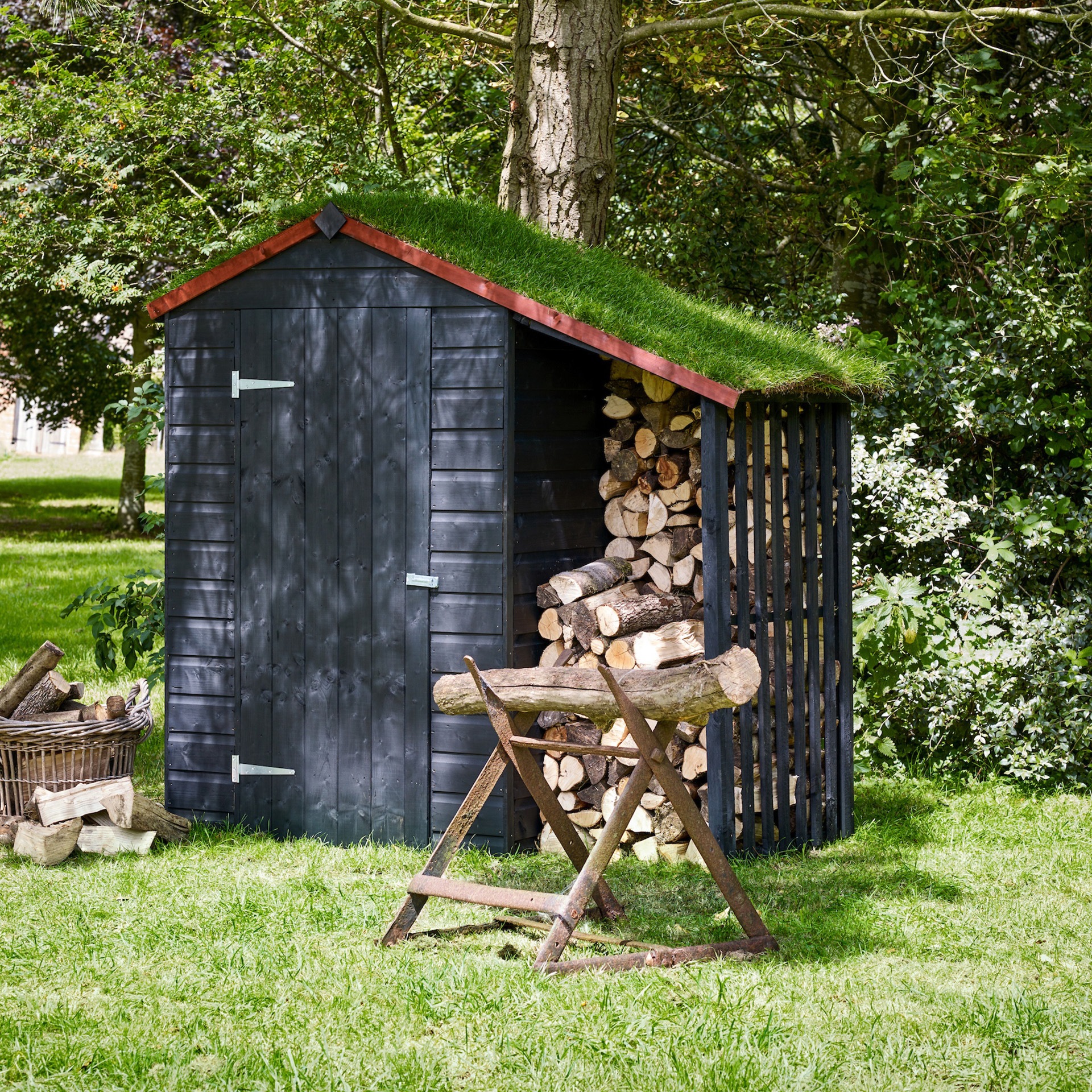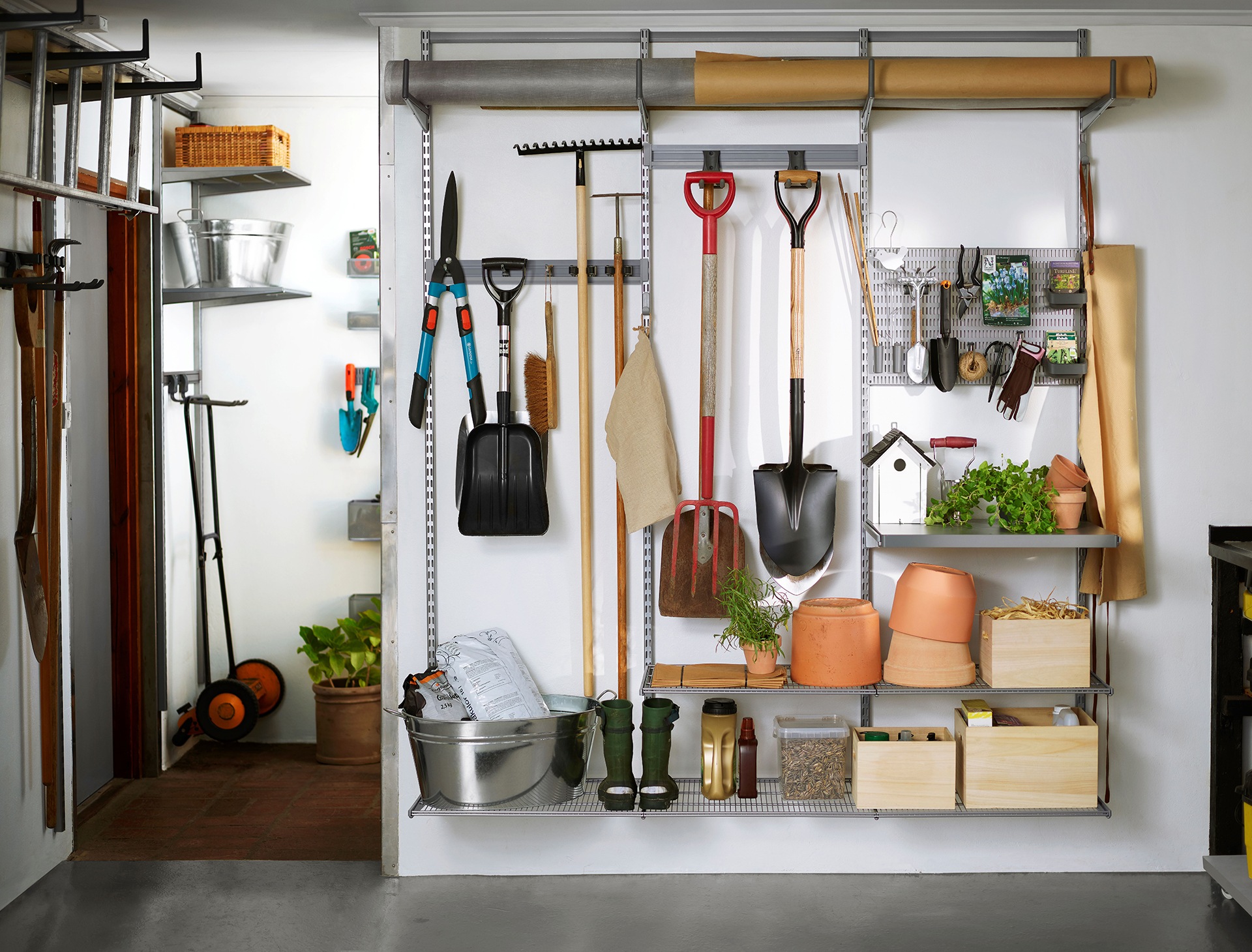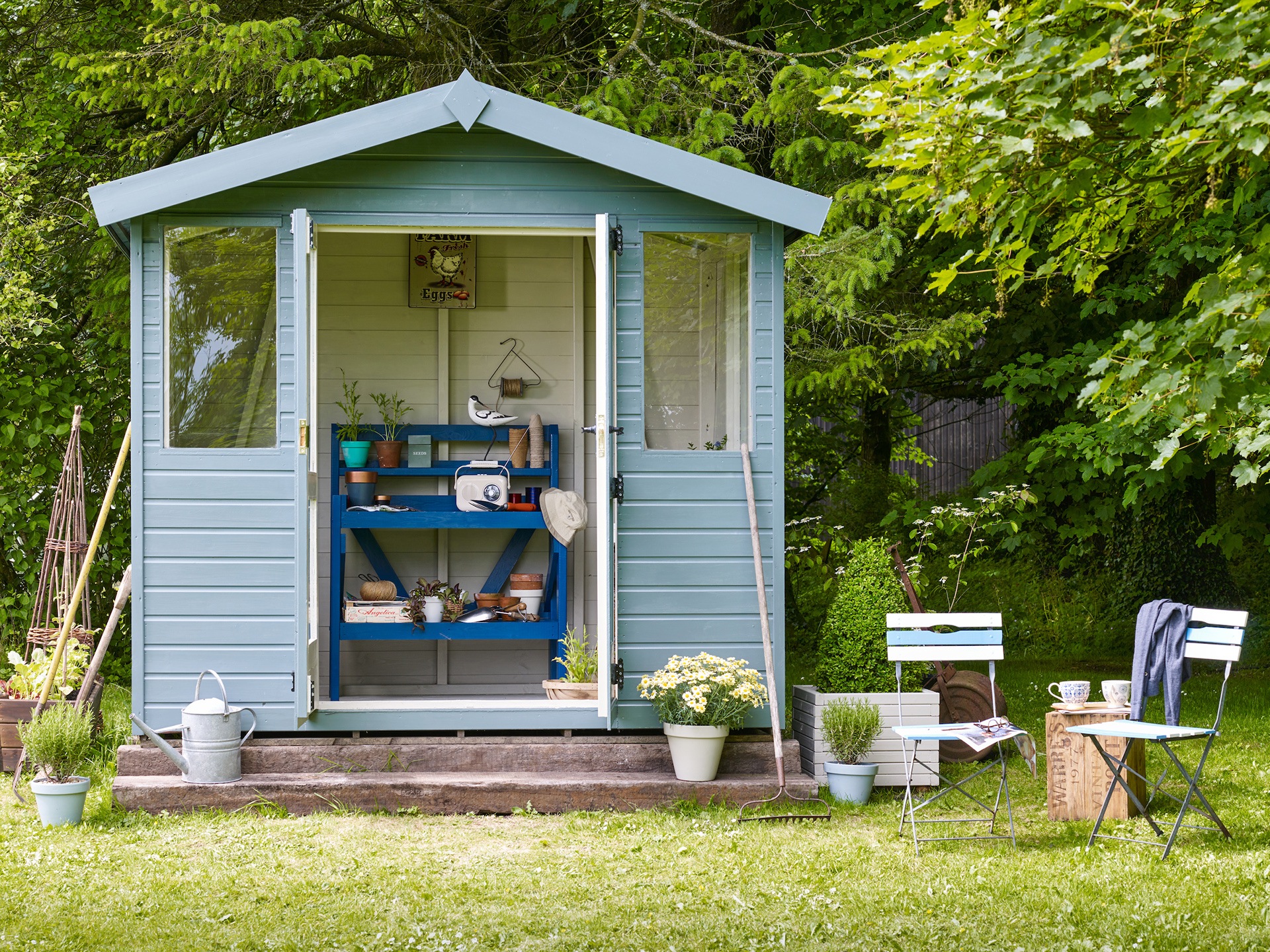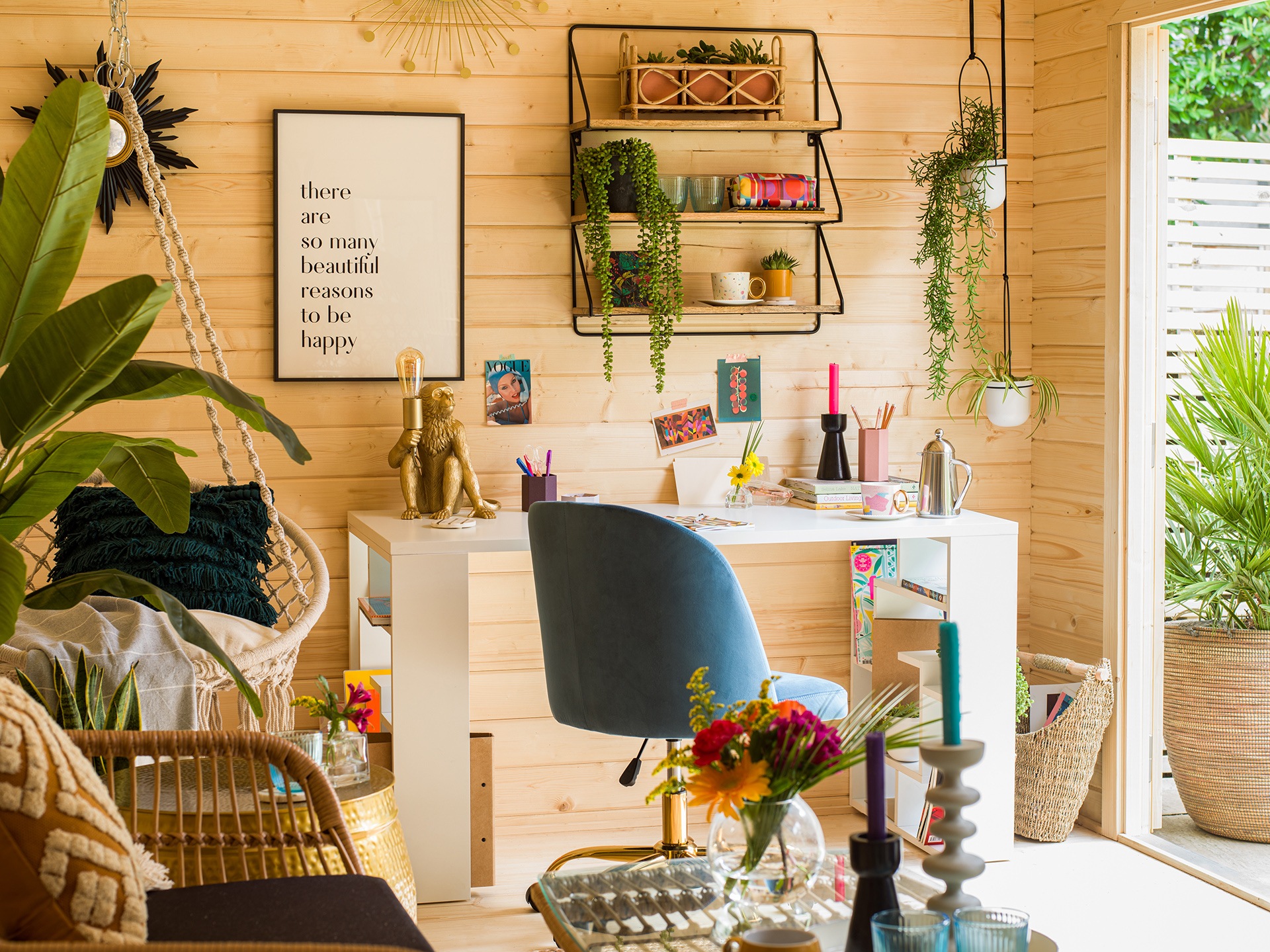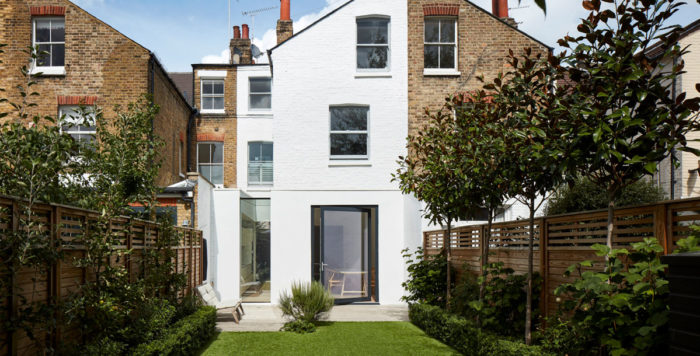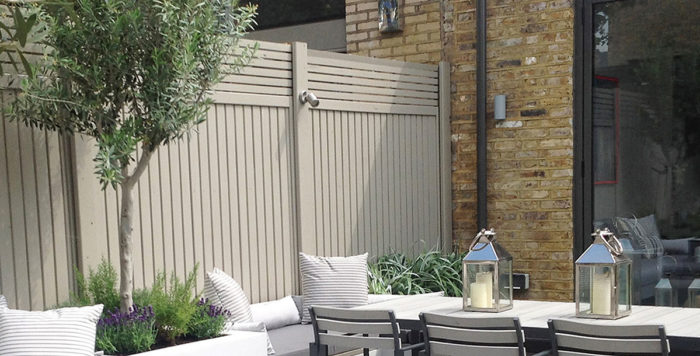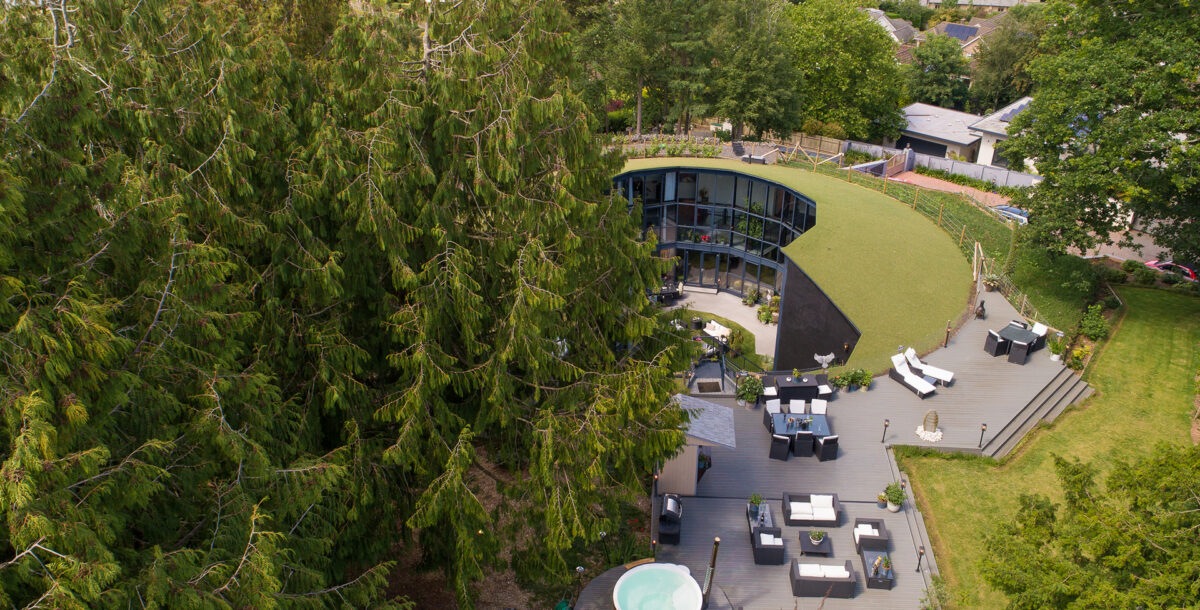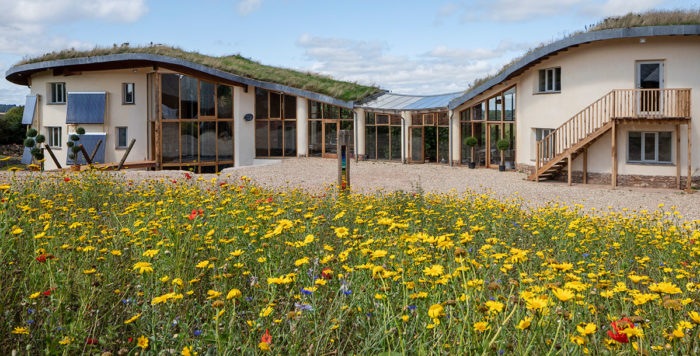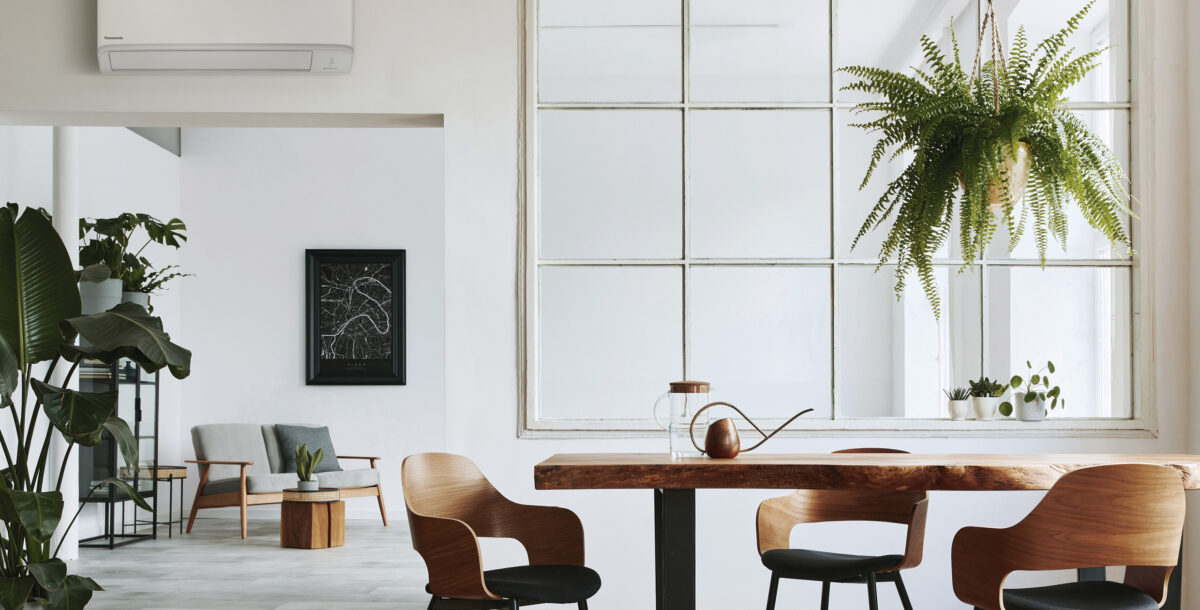Garden shed buying guide
Everything you need to know to help you choose, build and accessorise the perfect shed. Plus some gorgeous shed inspo to inspire you...
The common garden shed is anything but that. Ranging from a place to keep the lawn mower to a full-on workshop, a shed can add character to a garden and provide valuable extra space.
With such a wide range of uses, getting the right shed means making the right choices.
Your choice of shed will be determined by what you want to use it for.
Sam Jenkinson from Tiger says, “First, it’s essential to determine the shed’s purpose, whether it’s for storage, a workshop, or a garden office.
“This decision will guide your selection in terms of size and features. Next, measure the available space in your garden to ensure the shed fits well without overwhelming the area.
“Sheds come in various sizes, from small tool sheds to large workshops, so having accurate measurements is crucial. Additionally, consider the style of the shed to ensure it complements your garden’s aesthetic.
“Traditional apex roofs, modern pent roofs, and other styles are available to suit different tastes.”
If you’re planning on spending a lot of time in your shed, take a look at other types of purpose-made garden structure, such as a summer house or garden room, as these are more suitable for extended use.
Are garden sheds covered by home insurance?
According to insurance provider Aviva, most home insurance policies will offer limited cover for your garden and the items within (shed included) at no extra cost.
However, if you have high value items within your garden shed it might be best to insure them separately.
This is because most insurance policies have a single item limit which is usually between £1,500-£2,000.
Items worth £2,000 or more can be added individually, so be sure to speak to your insurer if you need specific cover.
It’s also worth noting that most insurers will only cover items kept locked and secure, so ensure your garden shed has adequate security.
Additionally, if your garden shed has been converted into a gym or home office, make sure to check whether the insurer will cover the costs if a break-in occurs and your laptop or equipment is stolen.
Do you need planning permission for a garden shed?
You’re unlikely to need planning permission for most sheds. However, there are some rules about where sheds can be positioned and maximum size and height allowed.
You can find the full rules relating to sheds and other outbuildings here on the Planning Portal.
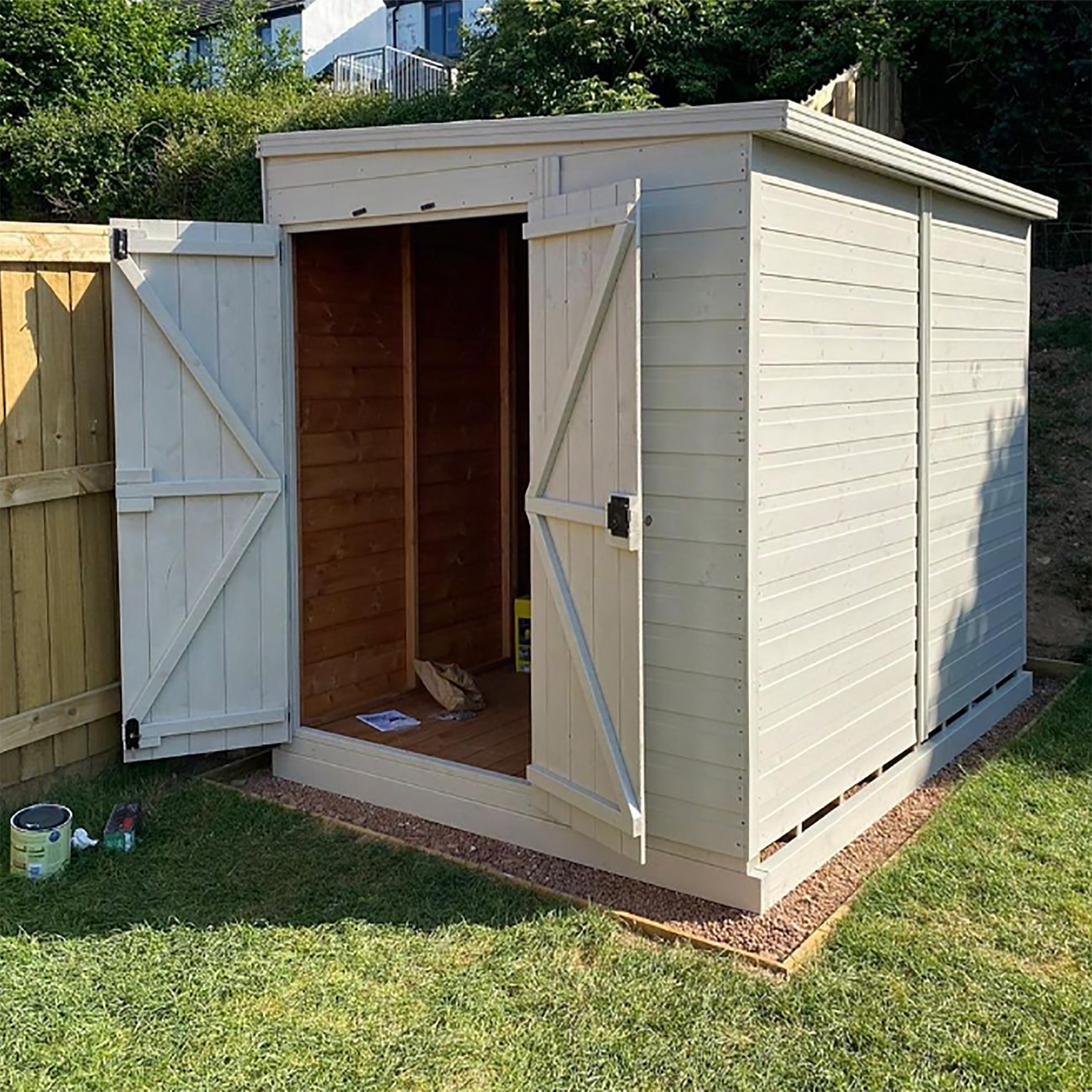
- Image credit: Tiger
Which materials are best for a garden shed?
Daniela Venturini, from Wayfair, explains the pros and cons of different construction materials:
- Wooden sheds: Wooden sheds are like the luxury cabins of the shed world – customizable, aesthetically pleasing, and naturally insulated. They’re perfect for those who want to spend time in their shed, whether for work or relaxation. Imagine a cozy outdoor-dining area, a craft room, or a serene yoga retreat. Just remember, wood needs regular maintenance to stay in top shape. Treat it like a fine wine – it gets better with age if you take care of it. Wooden sheds are highly customizable – think skylights, turrets, or even a charming potting shed. They’re warm in cold weather and can be treated to resist pests and rot. Whether you opt for a rustic cedar or a classic pine, a wooden shed blends beautifully into any garden setting. The natural aesthetic and warmth of wood make it an inviting space you’ll love to spend time in.
- Metal sheds: If durability is your top priority, metal sheds are your go-to. Resistant to weather, pests, and fire, they’re incredibly secure. However, they can get hot in the sun and may suffer from condensation issues. Think of them as the tough, no-nonsense option – built to last.
- Vinyl sheds: Vinyl sheds are the sturdy, low-maintenance option, perfect for harsh climates. They might come with a higher upfront cost, but their longevity pays off. They’re like the reliable friend who’s always there when you need them.
- Plastic sheds: Affordable and easy to assemble, plastic sheds are great for temporary storage solutions. They’re lightweight, so make sure to anchor them down in windy areas. Think of them as the quick and easy solution – perfect for renters or those who like to keep things flexible.
What do the expert say?
Cindy Tsui, from B&Q, adds, “Timber sheds offer a timeless style and, typically, come in three different cladding styles: overlap, shiplap and tongue and groove.
“Apex roofs, featuring a pointed middle, are ideal for rain runoff and provide more headroom in the centre, while pent roofs have a flat surface that slopes to one side, offering a modern look and an overhang for protection.
“Single doors are suitable for smaller items, whereas double doors allow easier access for large items, with ledged and braced doors providing added strength.
“When choosing windows, consider the shed’s intended use: no windows for enhanced security or windows for light and ventilation, with glazing options including budget-friendly polystyrene, easy-maintenance acrylic, unbreakable polycarbonate, and standard or toughened glass.
“For flooring, OSB (orientated strand board) is a budget-friendly option made from engineered wood, while tongue and groove flooring offers stronger, interlocking boards suitable for heavy items.”
OSB, which features in some budget sheds is susceptible to damp, and unlikely to last as long as real timber.
Timber itself can be dip treated with preservative or pressure treated: the latter is better because the timber treatment is forced further into the wood.
Shed roofs tend to be made out of timber covered with roofing felt or synthetic rubber called EPDM.
Some manufacturers also offer a Dutch-style roof, which is more difficult to assemble but increases the headroom inside. Double-check that any shed you buy includes a floor – some don’t.
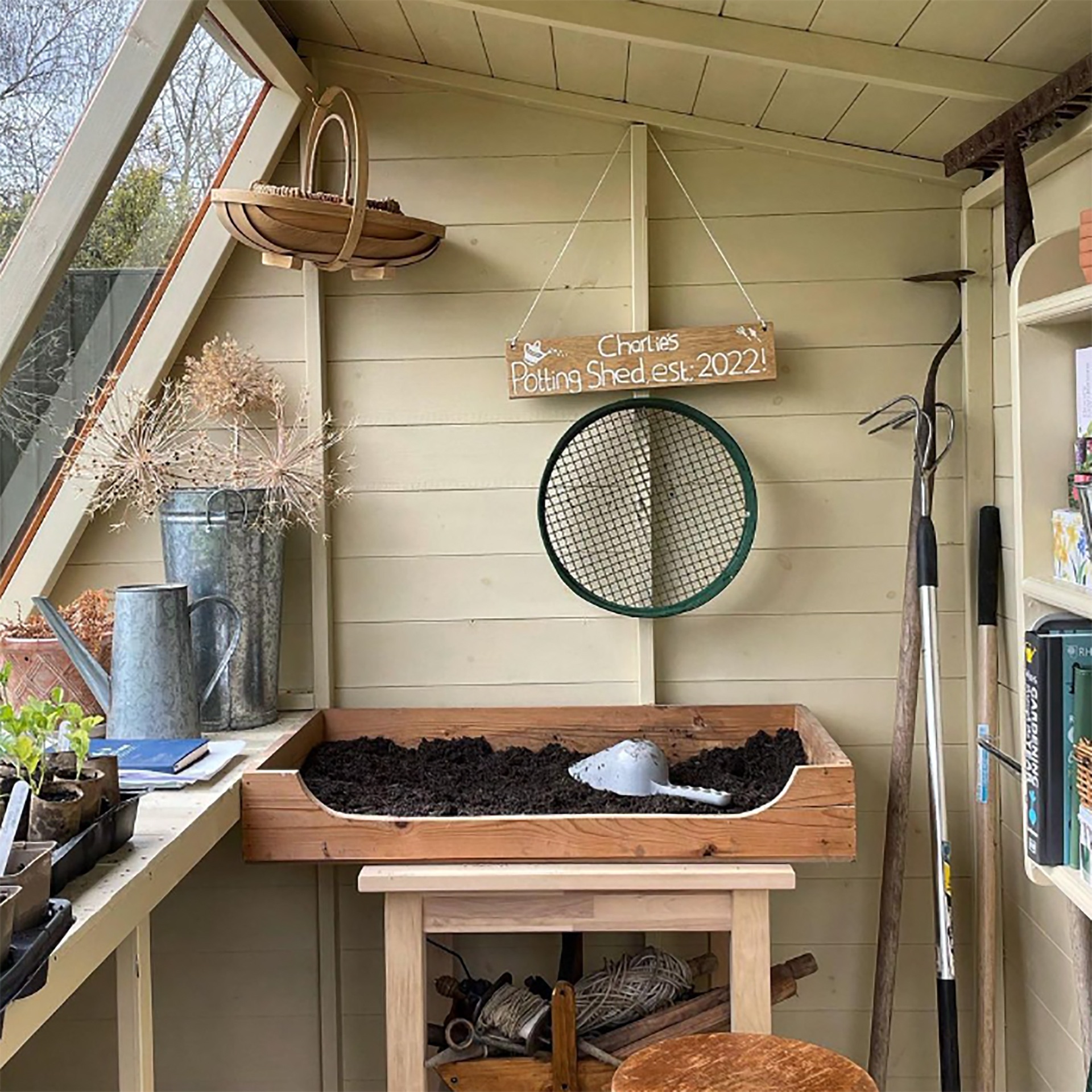
- Image credit; Tiger
What is the cost?
A small basic shed will cost from £200 upwards. A large good quality shed will cost from about £1,000. This prices don’t include assembly, so factor extra in if you want someone to do the job for you.
Preparing the ground
Once you’ve chosen your shed, you need to prepare the ground to make a stable, level base for it.
Grant Boonzaier, from Crane Garden Buildings explains, “A flat, level base is crucial for installing a shed, even just a 5mm difference can have an impact and cause future problems.
If your shed is erected on uneven or soft ground, it will settle over time and cause the timber to warp, meaning doors and windows could become misaligned, not to mention further issues with dampness and rot.
“You will need a firm concrete base to provide a consistently even and solid surface, which will keep even the largest and heaviest shed stable and correctly aligned.
“Choose a spot that is at least 30cm away from existing fences or buildings to allow for easy maintenance and upkeep over the years. Then cut back any overhanging trees or bushes, and clear any debris from the area.
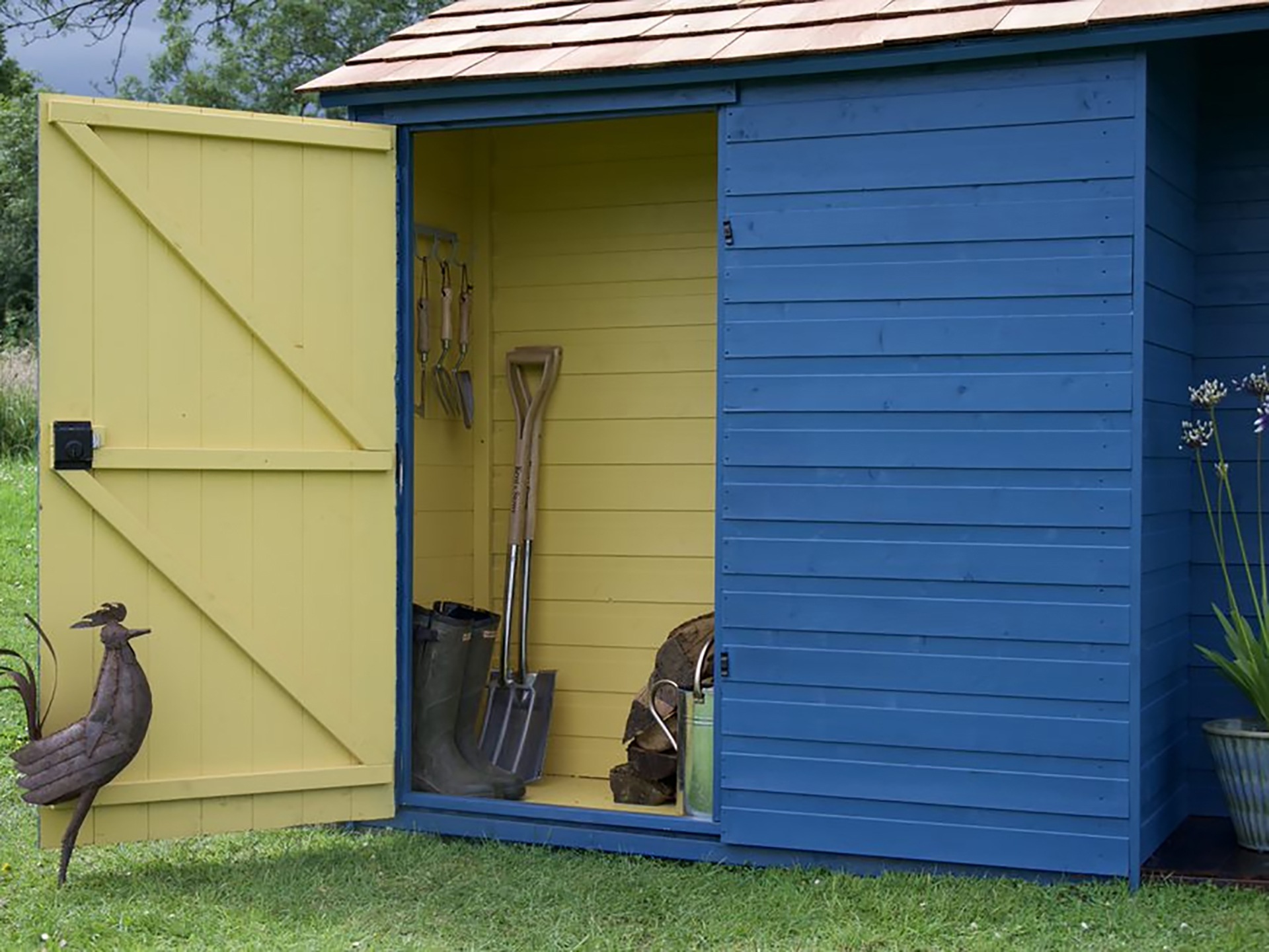
- Image credit: Protek
How thick should the garden shed base be?
“I recommend a concrete base that is around 100mm thick, and that it is also 50mm above the ground.
“This extra elevation keeps the timber away from the soil to prevent it rotting. If using hard paving around the shed, then a French drain should be installed between the paving and the base.
“This will improve drainage and prevent rain from bouncing off the hard surface and driving up underneath the shed, which in turn could cause damp and rot.
“A French drain is a simple small trench, dug around your building and filled with aggregate that will allow surface water to drain away.”
Gravel can also work as a base for a shed, as can paving slabs. It is possible to make a shed base from timber too, though this will be liable to rot over time.
A new option is specially made plastic grids. Look out for one made from recycled plastic like the one from Tiger. Whatever base you go for, use a spirit level to make sure it is absolutely level.
Building the shed
Sam Jenkinson says, “Carefully follow the manufacturer’s assembly instructions to ensure everything is done correctly.
Gather all necessary tools, such as a hammer, screwdriver, drill, and level, before you start. Having an extra pair of hands can be very helpful, especially for larger sheds.
It’s also best to undertake this project in dry, calm weather to avoid complications that might arise from working in adverse conditions.”
If you don’t fancy erecting your shed yourself, some manufacturers offer an assembly service, or it’s a job that any handyperson would tackle.
Treating and painting
Once you’ve built your shed, the next stage is treating the wood.
It’s important not to scrimp on this stage, prepare the wood properly first and follow the instructions given.
As you can see from the pictures here, painted sheds are really fashionable right now.
Becky Rackstraw, from Protek offers the following advice on how to paint a shed: “Make any repairs required and check your shed is watertight. If your shed has been previously painted, remove any loose or flaking paint with a stiff brush and sandpaper.
“Make sure the surfaces are clean, and if necessary, wash with warm water and detergent, leaving to dry completely.
“Before painting, cover surrounding areas to prevent any drips or splashes. You can use a brush, roller, or sprayer to apply the paint and two coats of paint are always better than one.
“Always allow each coat to dry before applying the next. Clean any utensils immediately after use.”
Purpose-made shed insulation is available in the form of special foil or foil bubble wrap that you cut to shape and staple and tape onto the interior walls.
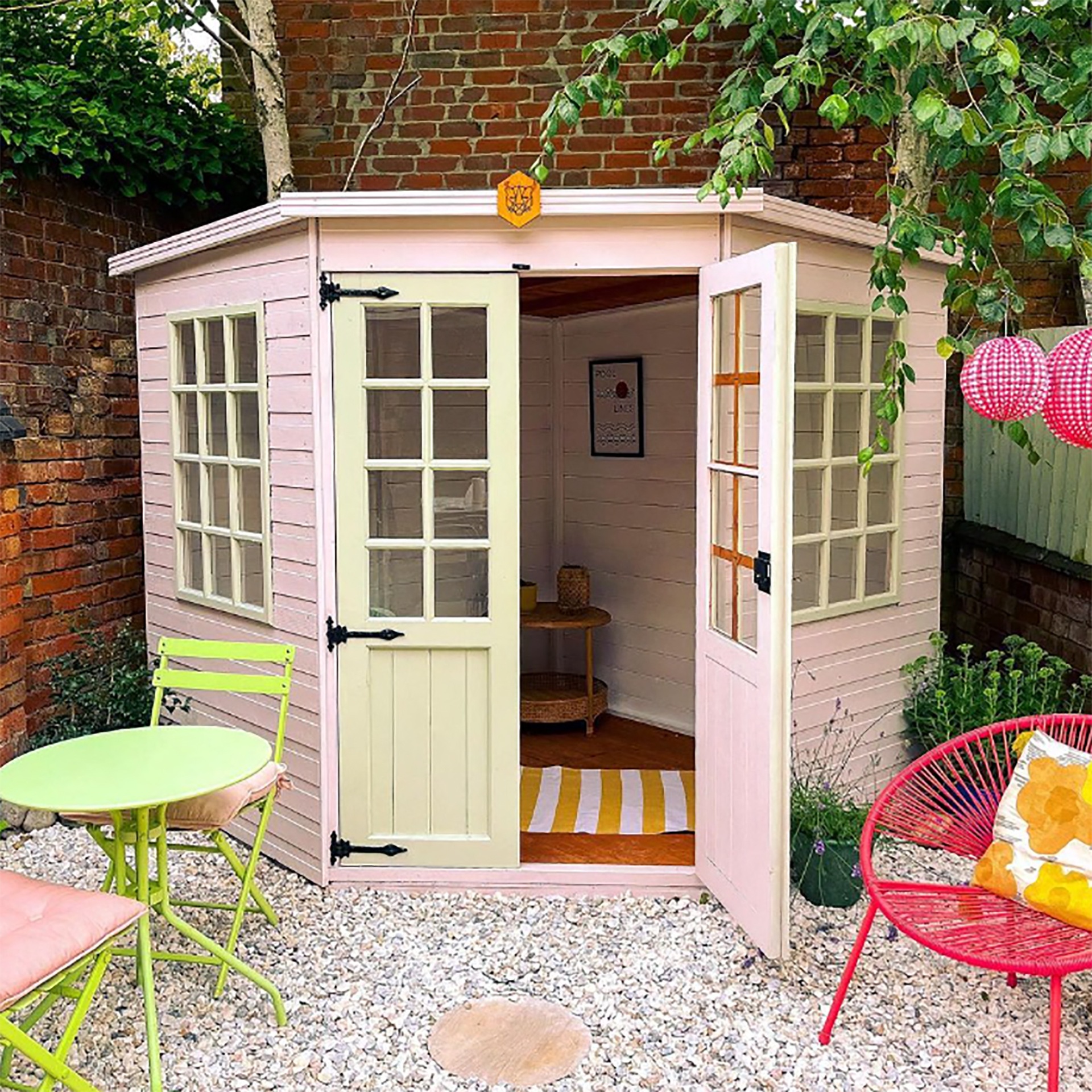
- Image credit: Tiger
Security
Thefts from sheds are a serious problem but there are lots of steps you can take to make yours more secure.
It’s a good idea to replace the fastenings and locks that the shed comes with.
Pick a heavy duty hasps and staples, and secure them with carriage bolts, which can’t be unscrewed from the outside.
Choose a closed or shrouded padlock that can’t just be easily cut through. Go for models that have been tested by bodies such as Secured by Design or Sold Secure.
You can buy security bars that fit right across the door, as well as shed alarms. Security lights can also be a good ideas and think too about where you site your shed.
Maintaining your shed
Grant Boonzaier says, “When it comes to shed maintenance, ventilation is key. Good airflow is essential to preventing condensation, which can lead to mould and rot.
“Timber buildings require air circulation, so it’s crucial to clear away fallen leaves and ensure gaps to aid airflow.
“This can easily be overlooked, particularly in winter months, but is important year-round. Open windows on dry days to allow fresh air to flow but close them before nighttime to prevent dew and condensation.
“Additionally, hinges and locks need regular maintenance too and using products like WD-40 can prevent rust and stiffness.
“Gutters will also need checking regularly to clear any blockages, and roofs should be cleaned a few times a year to prevent any moss from growing.”
Weathering your shed
Dr Jonathan Kirby, from Roxil, adds, “Weather-exposed wood can accumulate dirt, grime, algae and mould, making your once brand-new shed look rather tatty.
“What’s more, the unpredictable British summer, with its downpours one minute and blazing heat the next, can cause havoc to the durability of your wood, and lead to expensive repairs or, worse, having to buy a brand-new shed.
“But if your shed is looking a little tired, then there are some tips and tricks to help you extend its lifespan and help you avoid having to fork out for expensive repairs or a new shed.
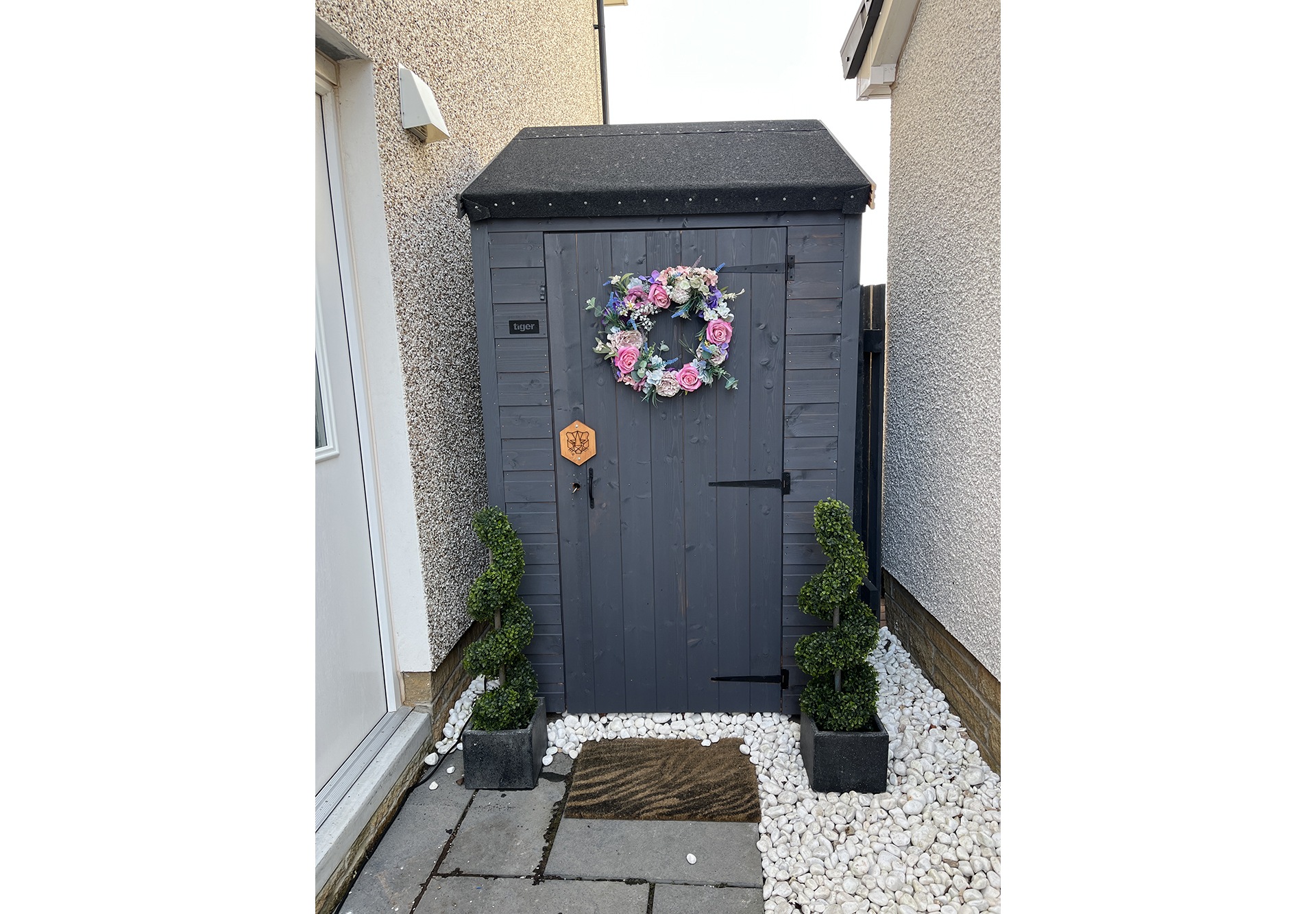
- Image credit: Tiger
Avoid the pressure washer
Pressure washers are often positioned as the holy grail of garden cleaning for their ability to blast away debris.
But they can be destructive to wooden structures like sheds, as well as fences and decking.
Pressure washing can damage or strip off the top layer of the wood, opening up the pore structure and the rate of moisture ingress worse, which can lead to more serious problems, such as warping and rot, which will cut down the life of your shed.
Don’t ignore the weather forecast
Whether you’re cleaning your shed, painting, or waterproofing it, each stage needs a couple of hours of preparation and sometimes up to 24 hours for the product to work its magic.
Your shed will need to stay dry at every point – apart from rinsing off the cleaner, of course – so make sure to check the weather for some dry days to get the job done properly.
Put down the aggressive cleaners
If your shed is discoloured by mould or moss, it can be tempting to want to whip out the bleach to get rid of the tainted colouring.
However, these aggressive cleaners will damage the surface of the wood.
It could also have the opposite effect – not lifting the tainted colour but changing the colour of the wood completely.
Get rid of loose debris
Before applying any cleaning products, the first step is to remove any loose debris such as leaves, twigs, and dust.
Use a stiff-bristled brush in the direction of the wood grain to tackle stubborn dirt and algae.
Gently clean your wood
When applying a biocidal cleaner, use a pump-action pressure sprayer for even coverage.
Wait at least an hour for the cleaner to work effectively before rinsing with a gentle garden hose.
Make sure to wear gloves and follow all instructions as you apply the product.
Smooth the wood surface
After the cleaning process, look closely.
You may notice that the wood has become textured with time.
Using fine sandpaper or a denibbing pad, gently rub in the direction of the grain to achieve a smooth surface.
Have fun with colour
You’ll need to apply a wood preserver to protect the wood from the elements.
Wood preserver is available in a range of great colours these days.
Waterproof to prevent future damage
The best way to keep your shed looking good all year round for years to come is to waterproof it.
Choose a suitable wood weatherproofing cream to create a waterproof barrier that will reduce warping and prevent the occurrence of rot.
And by keeping the surface of the wood dry, the amount of superficial mould and algae growth will reduce significantly. too.
Shed of the year?
We’ve also got some advice from Andrew Wilcox, founder and head judge of Cuprinol Shed of the Year, on how you can take your shed to the next level.
He suggests:
Colour confidence: Sheds are often relegated to bland, utilitarian hues.
So step away from the green. Use colour to express your personality.
A deep teal fosters a sense of tranquillity, for example, while a fiery red ignites a creative spark. Don’t be afraid to get playful – consider colour blocking with crisp white trim for a truly eye-catching design.
Functional flair: Incorporate elements that are both beautiful and practical.
Imagine a porthole window, offering a unique peek at your flourishing garden.
Inside, create a welcoming retreat with a built-in bar – perfect for entertaining guests or unwinding with an evening drink.
Sustainability is a winning strategy: Invest in solar panels to power your shed, reducing your environmental impact while saving on electricity costs.
Solar panels can be heavy, so it’s important to check that your shed could support the weight of any panels you buy. Flexible panels are one of the lighter options – or you can buy small purpose-made solar panel kits for sheds.
Conclusion
Sheds can be more than just storage units. For the culinary enthusiast, consider installing a compact grill or a mini fridge to create a gourmet ‘man cave’ station.
Alternatively, curate a dedicated tea and pastry nook for a peaceful afternoon tea experience.
Remember to incorporate a quiet zone – a comfy corner with soft lighting, ideal for curling up with a good book or simply enjoying a moment of reflection.
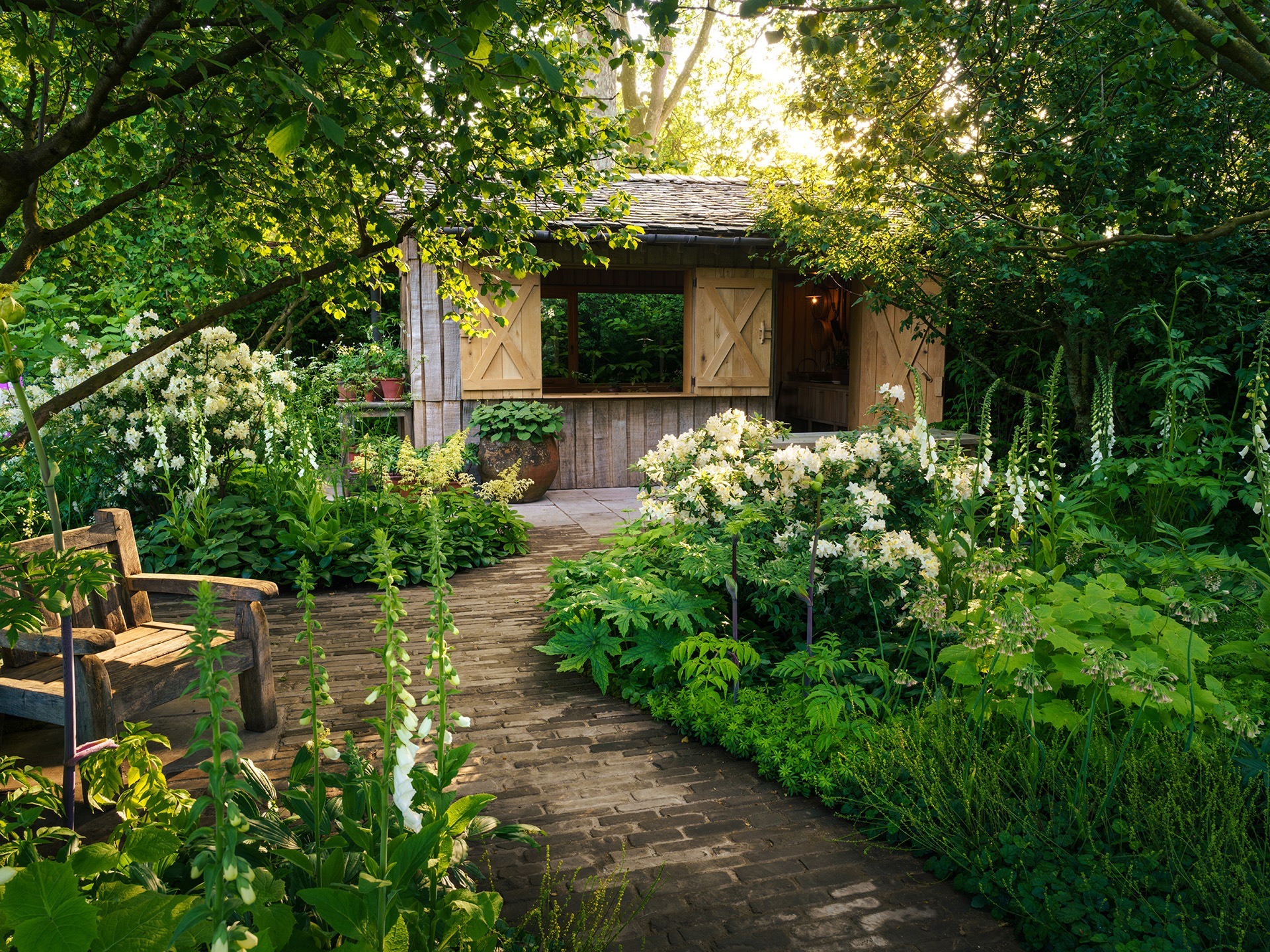
- The National Garden Scheme featured the ultimate in garden sheds its 2024 show garden at Chelsea Flower Show. Image credit: National Garden Scheme/Julie Skelton
READ MORE

